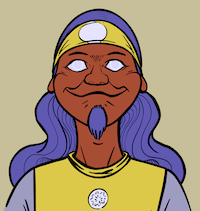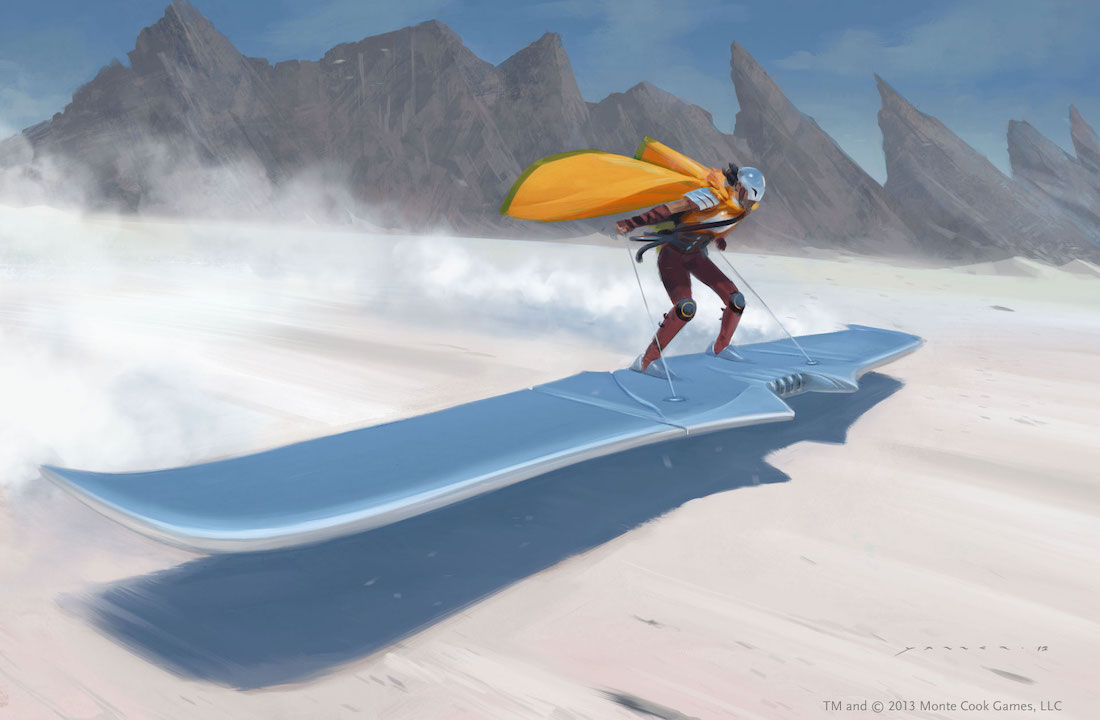How many times have you heard “You need a feat for that” as a response to your idea for an awesome move? Today we discuss how to empower players that come up with creative ideas.
Imagine a player saying: “I jump on a nearby shield and slide down the stairs shooting arrows into the Uruk-hai…”
Everyone at the table gets really excited and they imagine a scene that looks like this:
To which the GM responds: “Well, you would need Fleet of Foot and Successive Attacks to pull that off as one action. Do you have those abilities? Too bad. You fire one arrow into the Uruk-hai horde dealing 4 damage. Next.”
At this point the table’s excitement crashes back down.
Congratulations GM, you know the rules by heart, but you just robbed your players of an awesome scene. Even worse, you’re training them to play from their sheets instead of from their imaginations.
When I think about what kind of stories we retell after our games, whether about epic achievements or epic fails, those stories never, ever include the words: “…and then the GM spent 30 minutes going through the rules to determine if my move was legit. It was not.”
Empowering Player Imagination
Player: “I jump on a nearby shield and slide down the stairs shooting arrows into the Uruk-hai…”
GM: “OK. Sliding down the stairs will require a balancing check (DC 6). If you fail you will fall into the horde, on a critical fail you will fall into the horde and impale yourself. You can make a hindered attack if you spend Effort. You must pay an initial cost of 3 Speed points.”
In the above example, the GM’s thinking probably went along these lines:
- “Very creative move in the domain of possibility, this could make an awesome scene!”
- “Epic moves have epic fails, let’s state some possible fail states.”
- “This needs to be more expensive compared to doing the same action with any abilities, so Effort spends and an initial cost are required.”
- “Let’s apply the Attacker is Jostled rule - the attack is hindered unless they’re trained in balancing.”
All in all, we ended up with an action plus a (hindered) attack on a successful DC check. Not quite Legolas level of epic, but still enough to make a scene work. It comes at a hefty cost and great risk, so we don’t have to worry about any potential abuse.
Concerns
While I like to empower my players, I still want to maintain diversity at the table and not devalue similar abilities that other players might have or are waiting for at higher tiers. I mentioned Fleet of Foot and Successive Attacks already, but what if I had a character who Fights With Panache at the table? I would need to take into account that the similar ability Mobile Fighter becomes available at 4th Tier for her!
In that case, I would probably say: “No Gimli, you can’t do that as one action, but Legolas might give it a go…”
Digging Deeper
If we abstract this as an Action plus Attack type of move we might find some further use for it.
Consider this move:
I can imagine a player saying: “I want to feint high, then close the distance and do a takedown.”
Stated like that, the takedown would be the actual melee attack, but the DC would reflect the risky part of the move, which is feinting to close the distance. With that settled, we move on to the failure states. One is applied to the feint and the second is applied to the attack.
If the feint fails we can say that the opponent read the intention and successfully moved herself to a better position, which grants her some sort of advantage. This advantage can be a swift counterattack, where the player character just takes the damage, or it could be a hindered defense on her next turn. Critical fail might be both damage and a hindrance.
On a successful feint, the player now needs to do the actual attack - the grapple and takedown. Failure here might range from an opponent slipping away, to a critical miss where the player might find herself lying prone on the floor instead.
Now that we have failure states sorted, we can think about the cost. As this is a two-part action, or a two action move if you like, we want the player to expend her resources. So one mandatory Effort use for the takedown attempt and a static 3 point Speed cost for the feint should do the trick.
In this example, we need to take into account the level of an opponent. The takedown DC should be the same as the NPC level, but I would modify it by +1 against larger/heavier foes. For the feint part I would think about the swordsmanship level, and add either +1 or +2 to the DC against experienced swashbucklers.
So for a Town Guard (DC 2), the feint DC would be 4 (he’s an experienced swordsman, so +2), and the takedown DC would be 3 (since he’s wearing heavy armor, so +1).


Comments